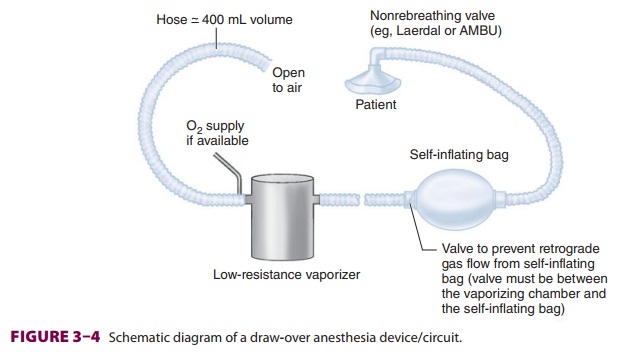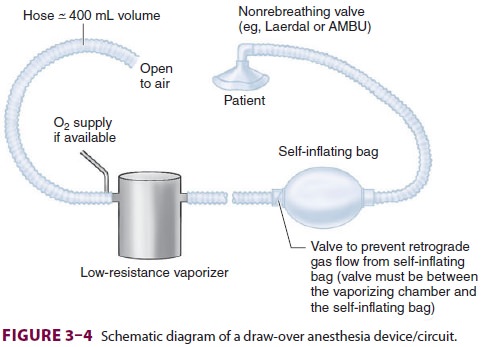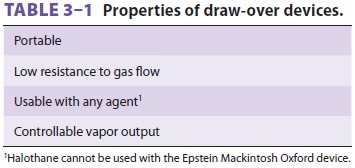Chapter: Clinical Anesthesiology: Anesthetic Equipment & Monitors : Breathing Systems
Open Drop and Draw Over Anesthesia

OPEN DROP ANESTHESIA
Although open-drop anesthesia is not
used in mod-ern medicine, its historic significance warrants a brief
description here. A highly volatile anesthetic— historically, ether or
chloroform—was dripped onto a gauze-covered mask (Schimmelbusch mask) applied
to the patient’s face. As the patient inhales, air passes through the gauze,
vaporizing the liquid agent, and carrying high concentrations of anes-thetic to
the patient. The vaporization lowers mask temperature, resulting in moisture
condensation and a drop in anesthetic vapor pressure (vapor pres-sure is
proportional to temperature).
A modern derivative of open-drop
anesthe-sia utilizes draw-over vaporizers that depend on the patient’s
inspiratory efforts to draw ambient air through a vaporization chamber. This
tech-nique may be used in locations or situations in which compressed medical
gases are unavailable (eg, battlefields).
DRAW OVER ANESTHESIA
Draw-over devices have nonrebreathing
circuits that use ambient air as the carrier gas, although supplemental oxygen
can be used, if available. The devices can be fitted with connections and
equip-ment that allow intermittent positive-pressure ven-tilation (IPPV) and
passive scavenging, as well as

continuous positive airway pressure
(CPAP) and positive end-expiratory pressure (PEEP).
In its most basic application (Figure 3–4),
air is drawn through a low-resistance vaporizer as the patient inspires.
Patients spontaneously breathing room air and a potent halogenated agent often
man-ifest an oxygen saturation (SpO2)
<90%, a situation treated with IPPV, supplemental oxygen, or both. The
fraction of inspired oxygen (Fio2) can be sup-plemented using an
open-ended reservoir tube of about 400 mL, attached to a t-piece at the
upstream side of the vaporizer. Across the clinical range of tidal volume and
respiratory rate, an oxygen flow rate of 1 L/min gives an Fio2 of 30% to 40%, or with 4 L/min, an Fio2 of 60% to 80%. There are several commercial
draw-over systems available that share common properties (Table 3–1).
The greatest advantage of draw-over
systems is their simplicity and portability, making them useful

in locations where compressed gases or
ventilators are not available. The presence of the nonrebreathing valve, PEEP
valve, and circuit filter close to the patient’s head makes the technique
awkward for head and neck surgery and pediatric cases. If the head is draped,
the nonrebreathing valve is often covered as well.
The original design of a draw-over
system has recently been modified to include a self-inflating bag, a
ventilator, and/or a heat and moisture exchanger. The Ohmeda Universal Portable
Anes-thesia Complete (U-PAC) is one example of a draw-over anesthesia system.
Related Topics